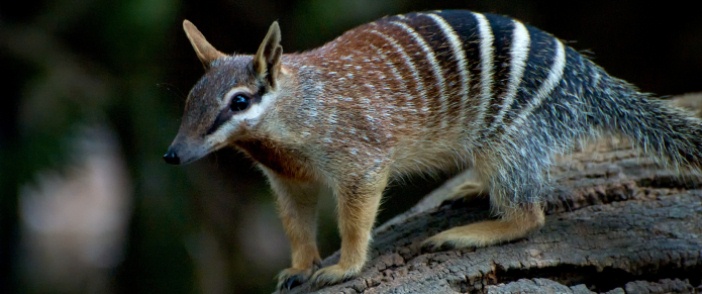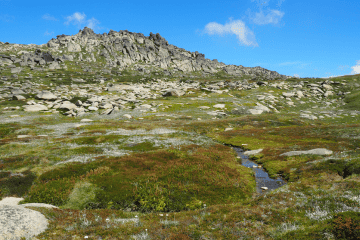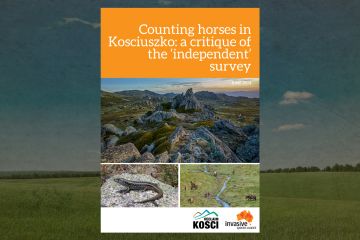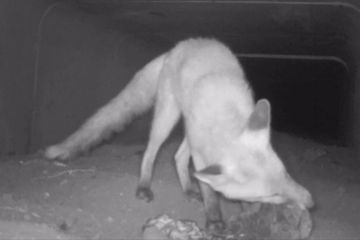
There is no doubt many animals suffer from invasive species management: when they are wounded rather than killed instantly, when trapped for hours or made ill by poison. Preventing or minimising animal suffering should be a high priority goal for ethical control programs.
1080 is currently essential for saving Australian native species, particularly threatened mammals, by offering an efficient way to control foxes (and cats to some extent). Until effective replacement baits are developed that reduce animal suffering, we cannot afford broadscale withdrawal of 1080, for this would cause immense harm to Australian wildlife, including death, suffering and local extinctions.
The welfare of many more animals – probably multiples more – is compromised when invasive species management is lacking or ineffective. Predation by cats, foxes or rats, and starvation due to competition or habitat degradation by horses, goats, rabbits or pigs brings great suffering to native wildlife. Invasive species also drive loss of biodiversity – another major moral issue.
But the welfare of native animals, and their conservation, is often neglected when control programs or methods are opposed due to animal welfare impacts on invasive species. Ideally, only humane techniques should ever be used. But for conservation imperatives (saving threatened species from extinction or stopping habitat degradation) there may be no option but to use a less-than-humane technique. This is particularly the case for the large-scale control needed in Australia. But even if we consider just animal welfare, the use of less-than-humane techniques may result in an overall reduction of animal suffering, benefiting more native animals than it harms introduced animals.
It has often been argued that conservation (focused on populations, species and ecological communities) and animal welfare (focused on the wellbeing of individual animals) are mutually exclusive. Philosopher Mark Sagoff, for example, argues that ‘An environmentalist cannot be an animal liberationist. Nor may animal liberationists be environmentalists.’[1] That perceived conflict is often at its sharpest with control of invasive animals.
But protecting populations or species from invasive species also means that individual animals are protected from predation, starvation or habitat damage by invasive species – benefits for both conservation and animal welfare. Those of us concerned for animal welfare should be strong advocates for preventing the introduction or spread of invasive species so as to limit the harm to native wildlife and to limit the future need to kill more and more invasive animals.
Many animal welfare organisations oppose the use of 1080 (sodium fluoroacetate), the main poison used to kill several invasive animals, particularly foxes. ISC is currently reviewing its welfare impacts as part of developing a policy on 1080.
Animal welfare and 1080
There is much disagreement and uncertainty about the welfare impacts of 1080 poisoning. Because diagnosing animal pain and suffering relies on interpreting changes that can be observed – changes in behaviour, physiology and functionality – it can be difficult to determine the humaneness of control methods. 1080 acts by interrupting energy and neurotransmitter production (and other metabolic functions); and symptoms of poisoning and causes of death vary between species and individuals.
There are three stages after ingestion of 1080:[2,3]
- a lag phase until the onset of clinical signs, usually one to a few hours, when there seems to be minimal discomfort or pain,
- a period of illness when animals are most likely to experience pain and distress, and
- the terminal phase, when suffering may be minimal due to limited consciousness and awareness.
Death often occurs within 2–4 hours of overt signs of poisoning, but can take much longer.[3] In tests with foxes given a known lethal dose, the mean lag phase was about 3.5 hours, the middle phase about 80 minutes and the terminal phase about 40 minutes.[4,5]
As a generalisation, carnivores (foxes, dogs, cats) usually suffer convulsions and respiratory failure, and herbivores (rabbits, deer) more typically die of heart failure. Symptoms vary greatly between individuals and between species.
In carnivores, particularly dogs, 1080 causes marked central nervous system effects such as involuntary muscle contractions and seizures. A New Zealand government review concluded that carnivores probably experience ‘severe to extreme nausea, lethargy, sickness and breathlessness’.[6] But it is uncertain whether they are conscious during and after convulsions. Because 1080 poisoning disrupts two major neurotransmitter pathways, and reduces the ability to feel pain in the spinal cord, it has been argued that animals are unlikely to feel pain despite the disturbing behaviour.[3] The effects are complex, so ‘it is not currently possible to assess the extent to which such impairment decreases the ability of animals to experience painful stimuli’.[3]
Herbivores tend to be ‘relatively undemonstrative of pain and sickness’, making it difficult to assess welfare impacts.[6] Potential signs of suffering observed in some include tremors, vomiting and retching, muscle weakness, partial paralysis and respiratory distress.[2]
It seems clear that 1080 causes suffering, but the extent and duration of it is uncertain. We strongly support research to better understand the effect of 1080 on target and non-target animals, to improve the humaneness of 1080 – some trials have been done on combining 1080 with analgesics, for example[5] – and on more humane alternatives.
However, the conservation and welfare of native animals also has to be considered in decisions about control of invasive species. Where there is no effective and more humane alternative than 1080, the overall outcome for animal welfare is still likely to be positive in many situations. The conservation and welfare costs of not controlling invasive species should also be part of the equation.
References
[1] Sagoff M. 1984. Animal Liberation and Environmental Ethics: Bad Marriage, Quick Divorce. Osgoode Hall Law Journal 22: 297-307.
[2] Eason C, Miller A, Ogilvie S, Fairweather A. 2011. An updated review of the toxicology and ecotoxicology of sodium fluoroacetate (1080) in relation to its use as a pest control tool in New Zealand. New Zealand Journal of Ecology 35(1): 1-20.
[3] Twig L, Parker R. 2010. Is sodium fluoroacetate (1080) a humane poison? The influence of mode of action, physiological effects, and target specificity. Animal Welfare 19: 249-263.
[4] Marks CA, Hackman C, Busana F and Gigliotti F 2000 Assuring that 1080 toxicosis in the red fox (Vulpes vulpes) is humane: fluoroacetic acid (1080) and drug combinations. Wildlife Research 27: 483-494
[5] Marks CA, Gigliotti F and Busana F 2009 Assuring that 1080 toxicosis in the red fox (Vulpes vulpes) is humane II. Analgesic drugs produce better welfare outcomes. Wildlife Research 36: 498-505.
[6] Landcare Research. 2010. How humane are our pest control tools? MAF Biosecurity New Zealand Technical Paper No: 2011/01




